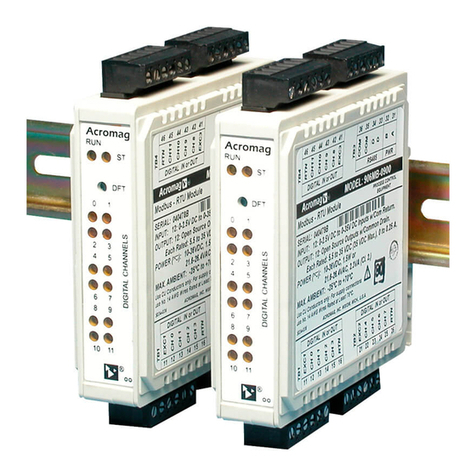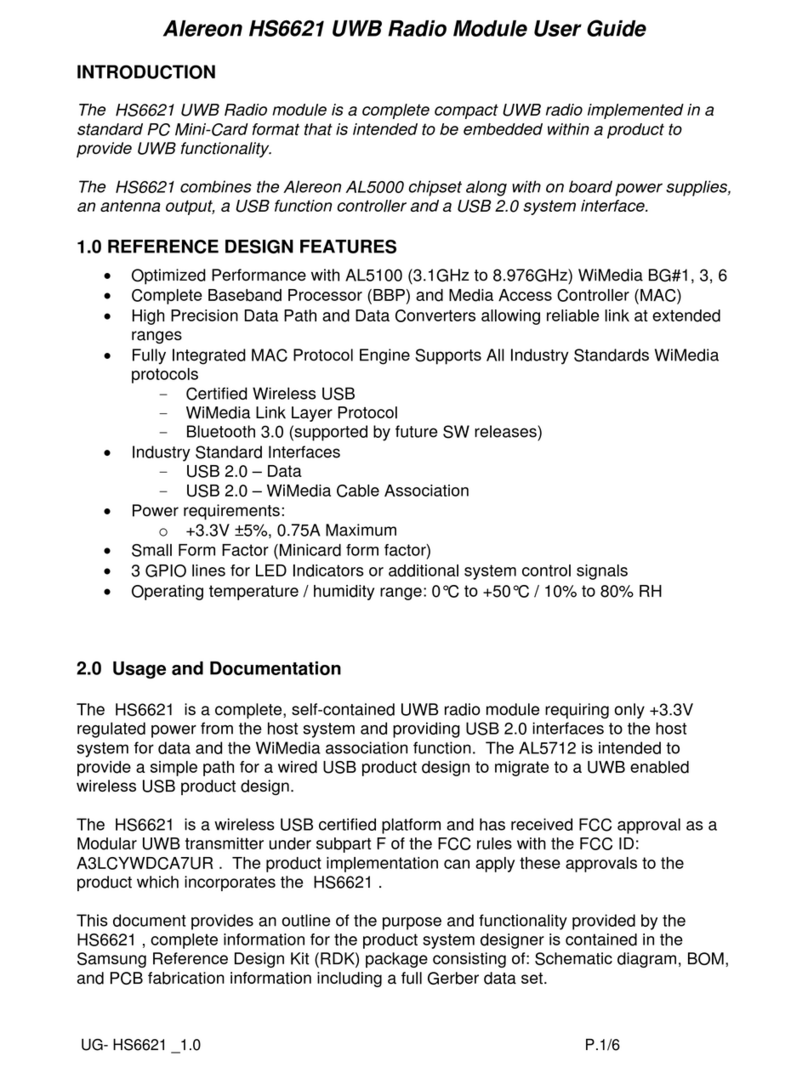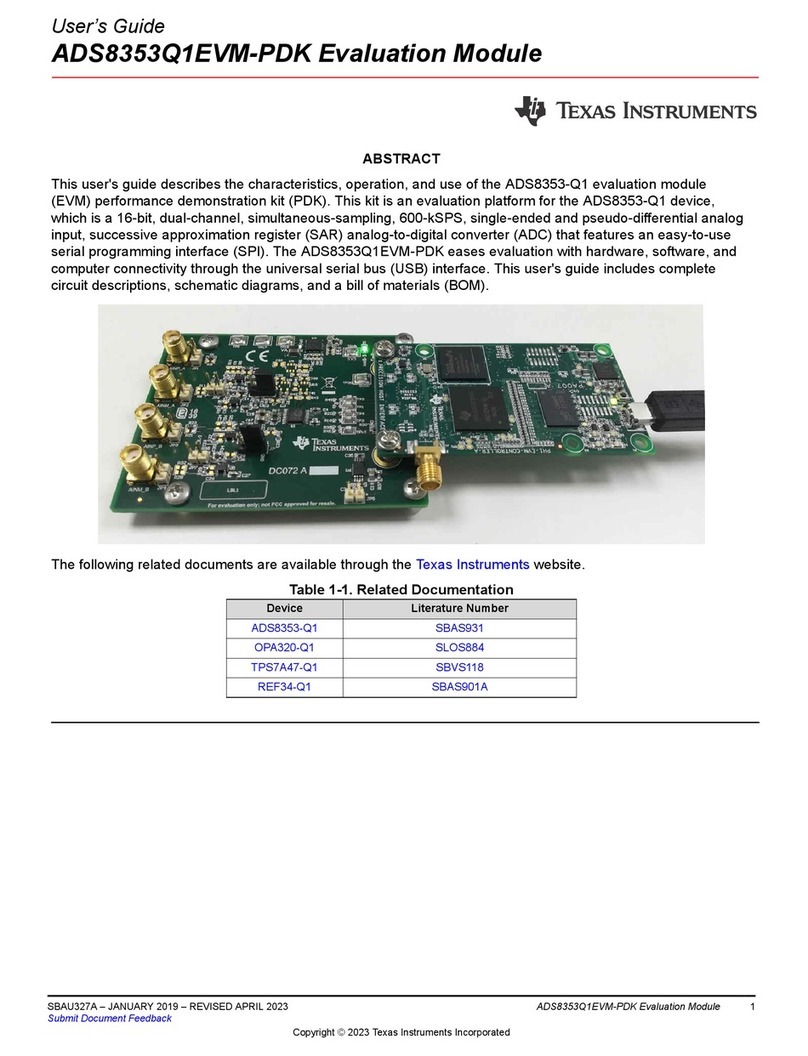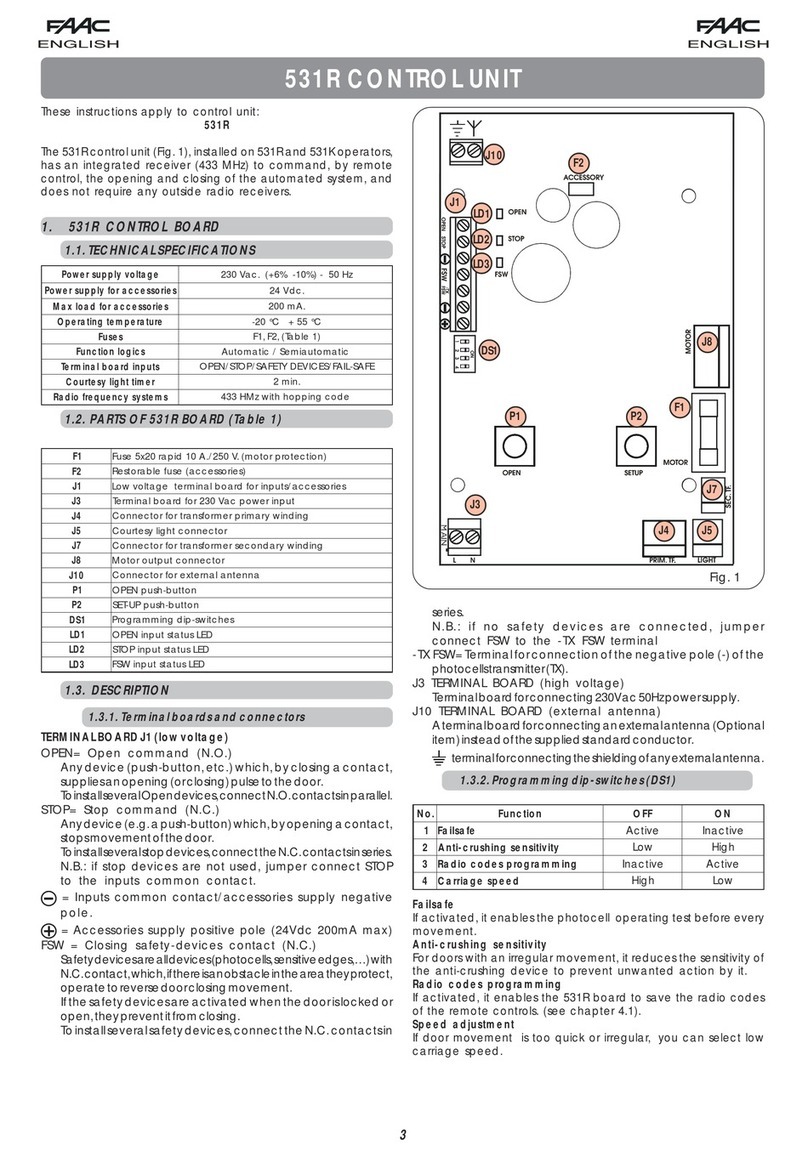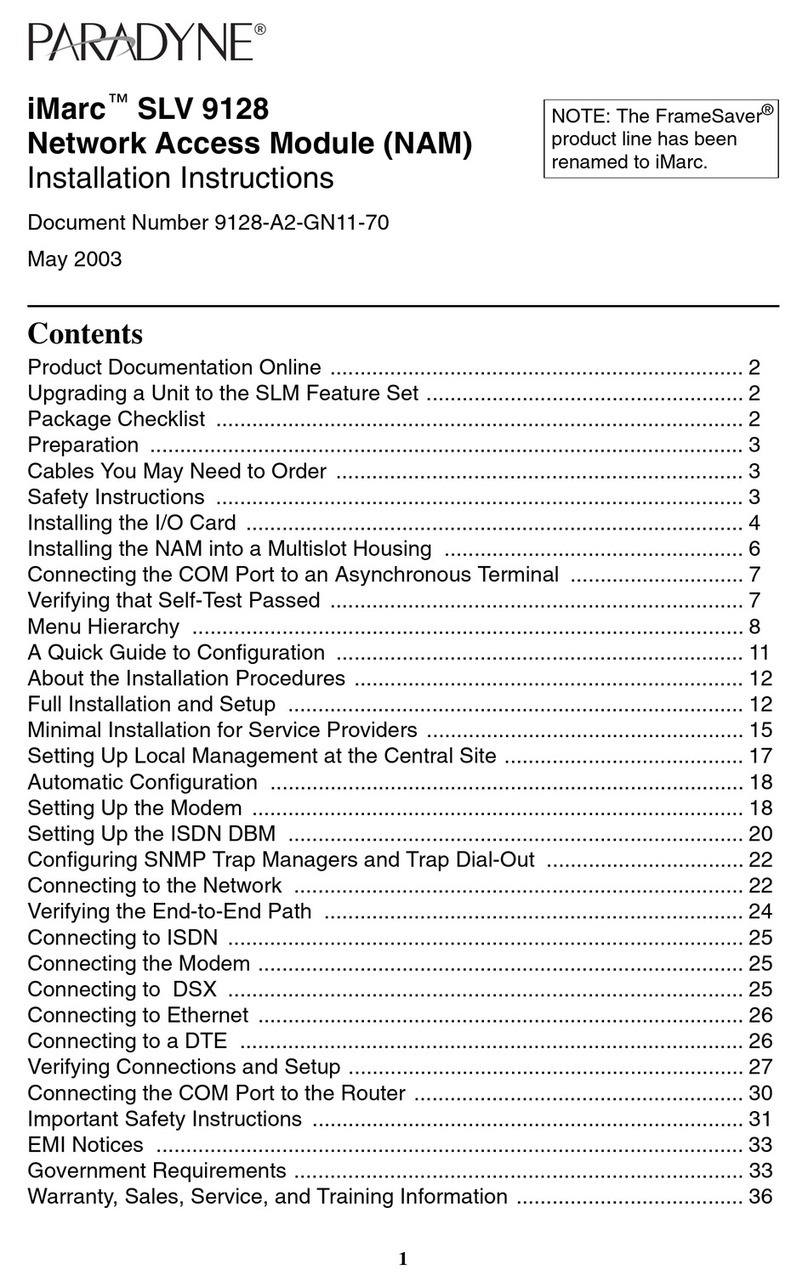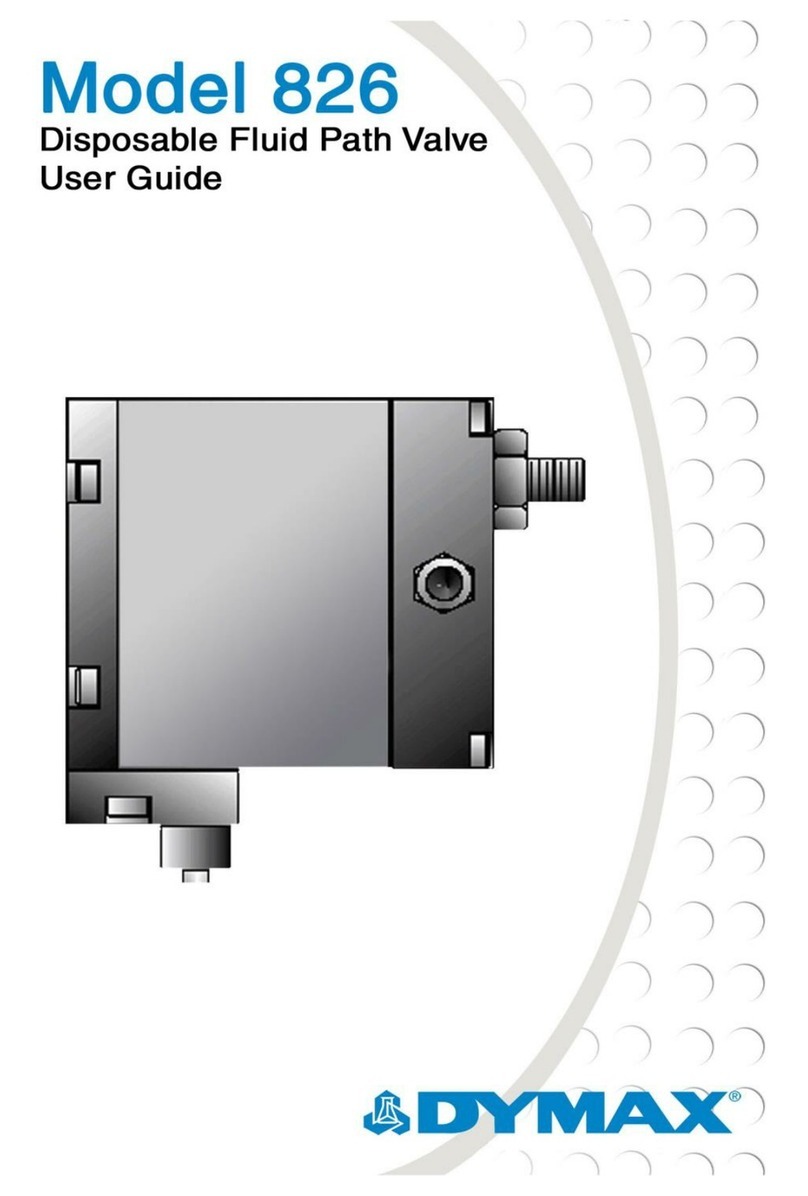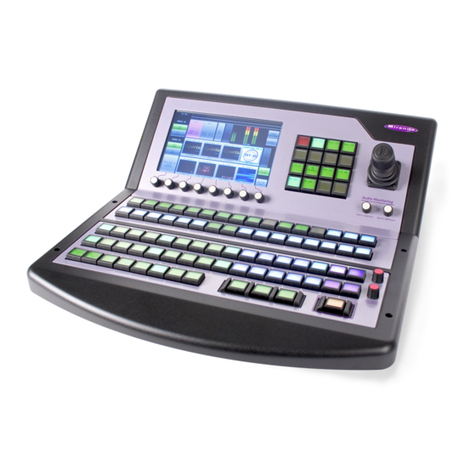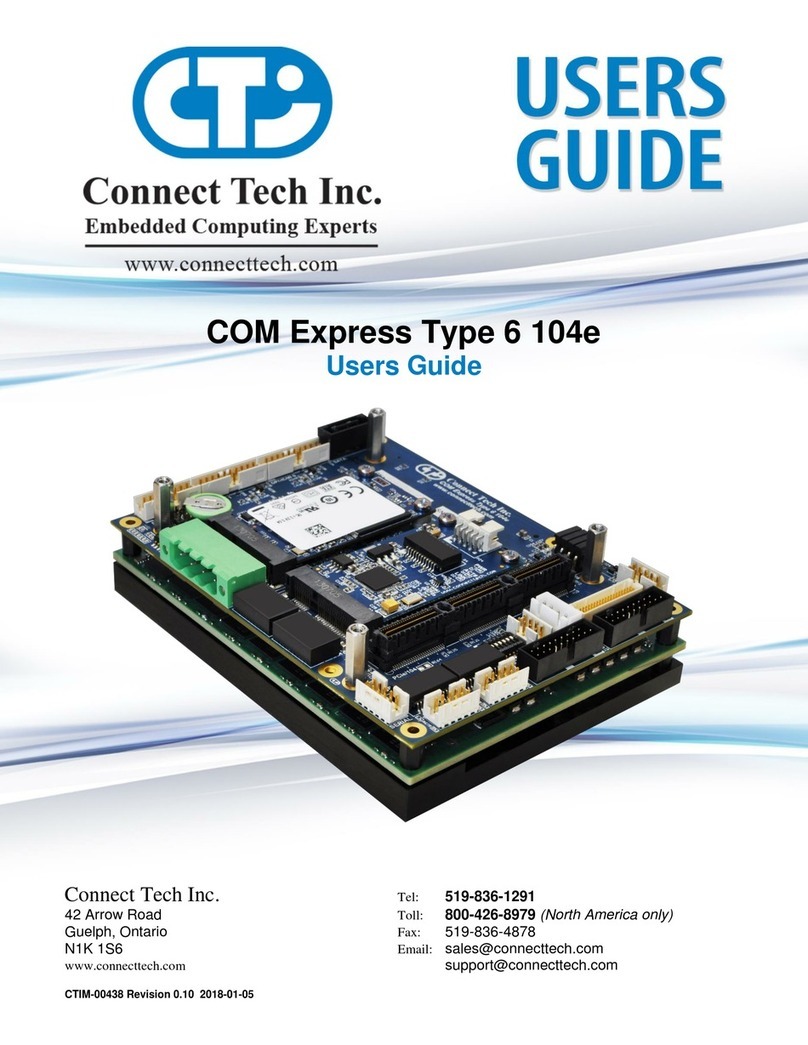Spectracom SecureSync 1200 Product information sheet


© 2009-2016 Spectracom Corp. All rights reserved.
The information in this document has been carefully reviewed and is
believed to be accurate and up-to-date. Spectracom assumes no respons
ibility for any errors or omissions that may be contained in this document,
and makes no commitment to keep current the information in this manual, or
to notify any person or organization of updates. This User Reference Guide
is subject to change without notice. For the most current version of this doc
umentation, please see our web site at spectracom.com.
Spectracom reserves the right to make changes to the product described in
this document at any time and without notice. Any software that may be
provided with the product described in this document is furnished under a
license agreement or nondisclosure agreement. The software may be used
or copied only in accordance with the terms of those agreements.
No part of this publication may be reproduced, stored in a retrieval sys
tem, or transmitted in any form or any means electronic or mechanical,
including photocopying and recording for any purpose other than the pur
chaser's personal use without the written permission of Spectracom Corp.
Other products and companies referred to herein are trademarks or
registered trademarks of their respective companies or mark holders.
Spectracom Corp., a Business of the Orolia Group
• 1565 Jefferson Road, Suite 460, Rochester, NY 14623 USA
• 3, Avenue du Canada, 91974 Les Ulis Cedex, France
• Room 208, No. 3 Zhong Guan Village South Road, Hai Dian District, Beijing 100081, China
Questions or comments regarding this User Reference Guide?
èE-mail: techpubs@spectracom.com
Warranty Information
For a copy of Spectracom's Limited Warranty policy, see the Spectracom
website: http://spectracom.com/support/warranty-information.
SecureSync User Reference Guide I

Blank page.
II SecureSync User Reference Guide

CONTENTS
SecureSync User Reference Guide • TABLE OF CONTENTS III
CHAPTER 1
Product Description 1
1.1 Getting Started 2
1.2 SecureSync Introduction 2
1.2.1 SecureSync's Inputs and Outputs 3
1.3 SecureSync Front Panel 3
1.3.1 Keypad and Information Display 4
1.3.1.1 Keypad Operation 4
1.3.1.2 Navigating the Information Display 4
1.3.2 Status LEDs 6
1.4 Unit Rear Panel 7
1.5 Option Cards 8
1.5.1 Option Cards Overview 10
1.5.2 Option Card Identification 13
1.5.2.1 Option Card Identification by ID/Part Number 13
1.5.3 Option Card Connectors 16
1.6 The SecureSync Web UI 17
1.6.1 The Web UI HOME Screen 17
1.6.2 The INTERFACES Menu 18
1.6.3 The Configuration MANAGEMENT Menu 19
1.6.4 The TOOLS Menu 20
1.7 Specifications 21
1.7.1 Input Power 21
1.7.1.1 Fuses 21
1.7.2 GNSS Receiver 22
1.7.3 RS-232 Serial Port (Front Panel) 23
1.7.4 10/100 Ethernet Port 23
1.7.5 Protocols Supported 23
1.7.6 1PPS Output 23
1.7.7 10 MHz Output 24
1.7.7.1 10 MHz output — Oscillator Phase Noise (dBc/Hz) 25

1.7.8 Mechanical and Environmental Specifications 26
1.8 Regulatory Compliance 27
CHAPTER 2
SETUP 29
2.1 Overview 30
2.1.1 Main Installation Steps 30
2.2 Unpacking and Inventory 31
2.3 Required Tools and Parts for Installation 32
2.4 Required GNSS Antenna Components 32
2.5 SAFETY 33
2.5.1 Safety: Symbols Used 33
2.5.2 SAFETY: Before You Begin Installation 33
2.5.3 SAFETY: User Responsibilities 35
2.5.4 SAFETY: Other Tips 36
2.6 Mounting the Unit 36
2.6.1 Rack Mounting 36
2.6.2 Desktop Operation 37
2.7 Connecting Supply Power 37
2.7.1 Power Source Selection 38
2.7.2 Using AC Input Power 38
2.7.3 Using DC Input Power 38
2.8 Connecting the GNSS Input 40
2.9 Connecting Network Cables 41
2.10 Connecting Inputs and Outputs 42
2.11 Powering Up the Unit 42
2.12 Setting up an IP Address 43
2.12.1 Dynamic vs. Static IP Address 44
2.12.2 Assigning a Static IP Address 45
2.12.2.1 Assigning a New Static IP Address 45
2.12.2.2 Setting Up an IP Address via the Front Panel 47
2.12.2.3 Setting Up a Static IP Address via a DHCP Network 49
2.12.2.4 Setting Up an IP Address via the Serial Port 50
2.12.2.5 Setting up a Static IP Address via Ethernet Cable 51
IV SecureSync User Reference Guide • TABLE OF CONTENTS

2.12.3 Subnet Mask Values 52
2.13 Accessing the WebUI 52
2.14 Configuring Network Settings 54
2.14.1 General Network Settings 55
2.14.2 Network Ports 56
2.14.3 Network Services 58
2.14.4 Static Routes 58
2.14.5 Access Rules 60
2.14.6 HTTPS 61
2.14.6.1 Accessing the HTTPS Setup Window 61
2.14.6.2 About HTTPS 62
2.14.6.3 Supported Certificate Format Types 63
2.14.6.4 Creating an HTTPS Certificate Request 63
2.14.6.5 Requesting an HTTPS Certificate 66
2.14.6.6 Uploading an X.509 PEM Certificate Text 68
2.14.6.7 Uploading an HTTPS Certificate File 68
2.14.7 SSH 69
2.14.8 SNMP 78
2.14.8.1 SNMP V1/V2c 82
2.14.8.2 SNMP V3 84
2.14.8.3 SNMP Traps 85
2.14.9 System Time Message 87
2.14.9.1 System Time Message Format 88
2.15 Configuring NTP 89
2.15.1 Checklist NTP Configuration 90
2.15.2 The NTP Setup Screen 90
2.15.3 Dis-/Enabling NTP 93
2.15.4 Viewing NTP Clients 94
2.15.5 Restoring the Default NTP Configuration 95
2.15.6 NTP Output Timescale 95
2.15.7 NTP Reference Configuration 97
2.15.7.1 The NTP Stratum Model 97
2.15.7.2 Configuring "NTP Stratum 1" Operation 97
2.15.7.3 Configuring "NTP Stratum Synchronization" 98
2.15.8 NTP Servers and Peers 99
2.15.8.1 The NTP Servers and NTP Peers Panels 101
SecureSync User Reference Guide • TABLE OF CONTENTS V

2.15.8.2 NTP Servers: Adding, Configuring, Removing 102
2.15.8.3 NTP Peers: Adding, Configuring, Removing 104
2.15.9 NTP Authentication 106
2.15.9.1 NTP Autokey 106
2.15.9.2 NTP: Symmetric Keys (MD5) 112
2.15.10 NTP Access Restrictions 114
2.15.11 Enabling/Disabling NTP Broadcasting 116
2.15.12 NTP over Anycast 117
2.15.12.1 Configuring NTP over Anycast (General Settings) 118
2.15.12.2 Configuring NTP over Anycast (OSPF IPv4) 119
2.15.12.3 Configuring NTP over Anycast (OSPF IPv6) 120
2.15.12.4 Configuring NTP over Anycast (BGP) 121
2.15.12.5 Configuring Anycast via NTP Expert Mode 122
2.15.12.6 Testing NTP over Anycast 125
2.15.13 NTP Orphan Mode 125
2.15.14 Host Disciplining 126
2.15.14.1 Enabling Host Disciplining 127
2.15.15 NTP Expert Mode 127
2.15.16 Spectracom Technical Support for NTP 130
2.16 Configuring Input References 131
2.17 Configuring Outputs 131
2.17.1 The Outputs Screen 132
2.17.2 The 1PPS and 10MHz Outputs 133
2.17.2.1 Configuring a 1PPS Output 135
2.17.2.2 Configuring the 10 MHz Output 135
2.17.3 Configuring Optional Outputs 136
2.17.4 Network Ports 136
2.17.5 Signature Control 136
2.17.5.1 Configuring Signature Control for an Output 137
CHAPTER 3
MANAGING TIME 139
3.1 The Time Management Screen 140
3.2 System Time 141
3.2.1 System Time 142
3.2.1.1 Configuring the System Time 142
3.2.1.2 Timescales 143
VI SecureSync User Reference Guide • TABLE OF CONTENTS

3.2.1.3 Manually Setting the Time 144
3.2.1.4 Using Battery Backed Time on Startup 146
3.2.2 Timescale Offset(s) 148
3.2.2.1 Configuring a Timescale Offset 148
3.2.3 Leap Seconds 149
3.2.3.1 Reasons for a Leap Second Correction 149
3.2.3.2 Leap Second Alert Notification 150
3.2.3.3 Leap Second Correction Sequence 150
3.2.3.4 Configuring a Leap Second 151
3.2.4 Local Clock(s), DST 152
3.2.4.1 Setting Up a Local Clock 152
3.2.4.2 DST Examples 154
3.2.4.3 DST and UTC, GMT 155
3.3 Managing References 155
3.3.1 Input Reference Priorities 155
3.3.1.1 Configuring Input Reference Priorities 157
3.3.1.2 The "Local System" Reference 160
3.3.1.3 The "User/User" Reference 161
3.3.1.4 Reference Priorities: EXAMPLES 163
3.3.2 The GNSS Reference 166
3.3.2.1 Reviewing the GNSS Reference Status 167
3.3.2.2 Determining Your GNSS Receiver Model 170
3.3.2.3 Selecting a GNSS Receiver Mode 172
3.3.2.4 Setting GNSS Receiver Dynamics 174
3.3.2.5 Performing a GNSS Receiver Survey 176
3.3.2.6 Configuring a GNSS Receiver Offset 178
3.3.2.7 Resetting the GNSS Receiver 179
3.3.2.8 Deleting the GNSS Receiver Position 180
3.3.2.9 Manually Setting the GNSS Position 181
3.3.2.10 GNSS Constellations 184
3.3.2.11 A-GPS 188
3.4 Holdover Mode 190
3.5 Managing the Oscillator 194
3.5.1 Oscillator Types 195
3.5.2 Configuring the Oscillator 196
3.5.2.1 About the "Time Figure of Merit (TFOM)" 196
3.5.2.2 About the "Phase Error Limit" 197
SecureSync User Reference Guide • TABLE OF CONTENTS VII

3.5.2.3 Configuring the Oscillator 197
3.5.3 Monitoring the Oscillator 198
3.5.4 Oscillator Logs 201
3.6 Managing TimeKeeper 201
3.6.1 What is TimeKeeper? 202
3.6.1.1 What can TimeKeeper do for me? 202
3.6.1.2 Using TimeKeeper – First Steps 202
3.6.2 Has TimeKeeper been activated? 203
3.6.3 Configuring a TimeKeeper PTP Master 204
3.6.4 Configuring TimeKeeper PTP Slaves 206
3.6.5 Configuring TimeKeeper as an NTP Time Server 209
3.6.6 En-/Disabling TimeKeeper 210
3.6.7 Status Monitoring with TimeKeeper 211
3.6.7.1 Enabling Status Monitoring 211
3.6.7.2 TKL "Status" Tab 212
3.6.7.3 TKL "Timing Quality" Tab 212
3.6.7.4 TKL "Time Map" Tab 213
CHAPTER 4
SYSTEM ADMINISTRATION 215
4.1 Powering Up/Shutting Down 216
4.1.1 Powering Up the Unit 216
4.1.2 Shutting Down the Unit 217
4.1.3 Issuing the HALT Command Before Removing Power 217
4.1.4 Rebooting the System 218
4.2 Notifications 219
4.2.1 Configuring Notifications 220
4.2.2 Notification Event Types 222
4.2.2.1 Timing Tab: Events 222
4.2.2.2 GPS Tab: Events 222
4.2.2.3 System Tab: Events 223
4.2.3 Configuring GPS Notification Alarm Thresholds 223
4.2.4 Setting Up SNMP Notifications 224
4.2.5 Setting Up Email Notifications 225
4.3 Managing Users and Security 227
4.3.1 Managing User Accounts 227
VIII SecureSync User Reference Guide • TABLE OF CONTENTS

4.3.1.1 Types of Accounts 227
4.3.1.2 Rules for Usernames 227
4.3.1.3 Adding/Deleting/Changing User Accounts 228
4.3.2 "user" Account Permissions 230
4.3.2.1 Account Differences, General 230
4.3.2.2 Account Differences, by Menu 231
4.3.3 Configuring Password Policies 232
4.3.3.1 The Administrator Login Password 232
4.3.3.2 Resetting the Administrator Password When Forgotten/Lost 233
4.3.4 LDAP Authentication 236
4.3.5 RADIUS Authentication 242
4.3.6 TACACS+ Authentication 247
4.3.6.1 Adding/Deleting a TACACS+ Server 247
4.3.6.2 Enabling/Disabling TACACS+ 248
4.3.7 HTTPS Security Levels 249
4.3.8 Unlocking the Keypad via Keypad 251
4.3.9 If a Secure Unit Becomes Inaccessible 251
4.4 Miscellanous Typical Configuration Tasks 251
4.4.1 Web UI Timeout 251
4.4.2 Configuring the Front Panel 252
4.4.3 Displaying Local Time 256
4.4.4 Creating a Login Banner 256
4.4.5 Show Clock 257
4.4.6 Product Registration 258
4.4.7 Synchronizing Network PCs 258
4.4.8 Selecting the UI Language 258
4.5 Quality Management 259
4.5.1 System Monitoring 259
4.5.1.1 Status Monitoring via Front Panel 259
4.5.1.2 Status Monitoring via the Web UI 259
4.5.1.3 Status Monitoring of Input References 262
4.5.1.4 Reference Monitoring 264
4.5.1.5 Ethernet Monitoring 265
4.5.1.6 Outputs Status Monitoring 266
4.5.1.7 Monitoring the Oscillator 269
4.5.1.8 Monitoring the Status of Option Cards 272
4.5.1.9 NTP Status Monitoring 274
SecureSync User Reference Guide • TABLE OF CONTENTS IX

4.5.1.10 Temperature Management 281
4.5.2 Logs 287
4.5.2.1 Types of Logs 288
4.5.2.2 Local and Remote Logs 292
4.5.2.3 The Logs Screen 292
4.5.2.4 Displaying Individual Logs 294
4.5.2.5 Saving and Downloading Logs 295
4.5.2.6 Configuring Logs 297
4.5.2.7 Setting up a Remote Log Server 299
4.5.2.8 Restoring Log Configurations 301
4.5.2.9 Clearing All Logs 301
4.5.2.10 Clearing Selected Logs 302
4.6 Updates and Licenses 302
4.6.1 Software Updates 302
4.6.2 Applying a License File 304
4.7 Resetting the Unit to Factory Configuration 305
4.7.1 Resetting All Configurations to their Factory Defaults 306
4.7.2 Backing-up and Restoring Configuration Files 306
4.7.2.1 Accessing the System Configuration Screen 307
4.7.2.2 Saving the System Configuration Files 308
4.7.2.3 Uploading Configuration Files 309
4.7.2.4 Restoring the System Configuration 310
4.7.2.5 Restoring the Factory Defaults 311
4.7.3 Cleaning the Configuration Files and Halting the System 311
4.7.4 Default and Recommended Configurations 311
4.7.5 Sanitizing the Unit 312
4.7.5.1 Physically Removing the CF Card 313
4.7.5.2 Cleaning/Restoring 313
4.7.5.3 Removing other files from the CF Card 314
4.7.5.4 Further Reading 314
APPENDIX
Appendix 315
5.1 Troubleshooting 316
5.1.1 Troubleshooting Using the Status LEDs 316
5.1.2 Minor and Major Alarms 317
5.1.3 Troubleshooting: System Configuration 318
XSecureSync User Reference Guide • TABLE OF CONTENTS

5.1.3.1 System Troubleshooting: Browser Support 319
5.1.4 Troubleshooting – Unable to Open Web UI 319
5.1.5 Troubleshooting via Web UI Status Page 320
5.1.6 Troubleshooting GNSS Reception 322
5.1.7 Troubleshooting – Keypad Is Locked 323
5.1.8 Troubleshooting – 1PPS, 10 MHz Outputs 323
5.1.9 Troubleshooting – Blank Information Display 324
5.1.10 Troubleshooting the Front Panel Serial Port 325
5.1.11 Troubleshooting the Front Panel Cooling Fan 326
5.1.12 Troubleshooting – Network PCs Cannot Sync 326
5.1.13 Troubleshooting Software Update 327
5.2 Option Cards 328
5.2.1 Accessing Option Cards Settings via the WebUI 328
5.2.1.1 Web UI Navigation: Option Cards 328
5.2.1.2 Viewing Input/Output Configuration Settings 329
5.2.1.3 Configuring Option Card Inputs/Outputs 330
5.2.1.4 Viewing an Input/Output Signal State 331
5.2.1.5 Verifying the Validity of an Input Signal 332
5.2.2 Option Card Field Installation Instructions 333
5.2.2.1 Field Installation: Introduction 333
5.2.2.2 Outline of the Installation Procedure 334
5.2.2.3 Safety 334
5.2.2.4 [1]: Unpacking 335
5.2.2.5 [2]: Saving Refererence Priority Configuration 335
5.2.2.6 [3]: Determining the Installation Procedure 336
5.2.2.7 [4]: Bottom Slot Installation 337
5.2.2.8 [5]: Top Slot Installation, Bottom Slot Empty 338
5.2.2.9 [6]: Top Slot Installation, Bottom Slot Occupied 340
5.2.2.10 [7]: Frequency Output Cards: Wiring 342
5.2.2.11 [8]: Gb ETH Card Installation, Slot1 Empty 343
5.2.2.12 [9]: Gb ETH Card Installation, Slot1 Occupied 345
5.2.2.13 [10]: Alarm Relay Card, Cable Installation 346
5.2.2.14 [11]: Verifying HW Detection and SW Update 347
5.2.2.15 [12]: Restoring Reference Priority Configuration 349
5.2.3 Time and Frequency Option Cards 349
5.2.3.1 1PPS Out [1204-18, -19, -21, -2B] 349
5.2.3.2 1PPS In/Out [1204-28, -2A] 354
5.2.3.3 1PPS In/Out, 10MHz In [1204-01, -03] 360
SecureSync User Reference Guide • TABLE OF CONTENTS XI

5.2.3.4 Frequency Out [1204-08, -1C, -26, -38] 368
5.2.3.5 Programmable Frequency Out [1204-13, -2F, -30] 371
5.2.3.6 Programmable Square Wave Out [1204-17] 377
5.2.3.7 Simulcast (CTCSS/Data Clock) [1204-14] 380
5.2.4 Telecom Option Cards 388
5.2.4.1 T1/E1 Out [1204-09, -0A] 388
5.2.5 Time Code Option Cards 394
5.2.5.1 IRIG Out [1204-15, -1E, -22] 394
5.2.5.2 IRIG In/Out [1204-05, -27] 400
5.2.5.3 STANAG Out [1204-11, -25] 413
5.2.5.4 STANAG In [1204-1D, -24] 421
5.2.5.5 HAVE QUICK Out [1204-10, -1B] 429
5.2.5.6 HAVE QUICK In/Out [1204-29] 436
5.2.5.7 ASCII Time Code In/Out [1204-02, -04] 443
5.2.6 Network Interface Option Cards 454
5.2.6.1 Gigabit Ethernet [1204-06] 454
5.2.6.2 PTP Grandmaster [1204-32] 456
5.2.7 Miscellaneous Option Cards 472
5.2.7.1 Alarm Relay Out [1204-0F] 472
5.2.7.2 Revertive Selector Card [1204-2E] 477
5.2.7.3 Event Broadcast [1204-23] 479
5.2.7.4 Bi-Directional Communication, RS-485 [1204-0B] 487
5.3 Command-Line Interface 490
5.3.1 Setting up a Terminal Emulator 491
5.3.2 CLICommands 492
5.4 ASCIITime Code Data Formats 497
5.4.1 NMEA GGA Message 497
5.4.2 NMEA RMC Message 498
5.4.3 NMEA ZDA Message 498
5.4.4 Spectracom Format 0 499
5.4.5 Spectracom Format 1 500
5.4.6 Spectracom Format 1S 502
5.4.7 Spectracom Format 2 503
5.4.8 Spectracom Format 3 505
5.4.9 Spectracom Format 4 507
5.4.10 Spectracom Format 7 508
5.4.11 Spectracom Format 8 510
XII SecureSync User Reference Guide • TABLE OF CONTENTS

5.4.12 Spectracom Format 9 511
5.4.12.1 Format 9S 512
5.4.13 Spectracom Epsilon Formats 513
5.4.13.1 Spectracom Epsilon TOD1 513
5.4.13.2 Spectracom Epsilon TOD3 514
5.4.14 BBC Message Formats 515
5.4.14.1 Format BBC-01 515
5.4.14.2 Format BBC-02 516
5.4.14.3 Format BBC-03 PSTN 517
5.4.14.4 Format BBC-04 519
5.4.14.5 Format BBC-05 (NMEA RMC Message) 520
5.4.15 GSSIP Message Format 520
5.4.16 EndRun Formats 521
5.4.16.1 EndRun Time Format 521
5.4.16.2 EndRunX (Extended) Time Format 522
5.5 IRIG Standards and Specifications 523
5.5.1 About the IRIG Output Resolution 523
5.5.2 IRIG Carrier Frequencies 524
5.5.3 IRIG B Output 528
5.5.3.1 FAA IRIG B Code Description 531
5.5.4 IRIG E Output 535
5.5.5 IRIG Output Accuracy Specifications 539
5.6 Technical Support 540
5.6.1 Regional Contact 540
5.7 Return Shipments 541
5.8 License Notices 541
5.8.1 NTPv4.2.6p5 541
5.8.2 OpenSSH 546
5.8.3 OpenSSL 549
5.9 List of Tables 553
5.10 List of Images 555
5.11 Document Revision History 557
INDEX
SecureSync User Reference Guide • TABLE OF CONTENTS XIII

BLANK PAGE.
XIV SecureSync User Reference Guide • TABLE OF CONTENTS

CHAPTER 1•SecureSync User Reference Guide 1
CHAPTER 1
Product Description
The Chapter presents an overview of the SecureSync Time and Fre
quency Synchronization System, its capabilities, main technical fea
tures and specifications.
The following topics are included in this Chapter:
1.1 Getting Started 2
1.2 SecureSync Introduction 2
1.3 SecureSync Front Panel 3
1.4 Unit Rear Panel 7
1.5 Option Cards 8
1.6 The SecureSync Web UI 17
1.7 Specifications 21
1.8 Regulatory Compliance 27

1.1 Getting Started
Welcome to the SecureSync User Reference Guide.
Where to start:
First-time users: "SecureSync Introduction" below.
Users with some knowledge of Time and Frequency Servers: "Overview" on page30.
If your unit is up and running and you want to change a setting: "MANAGING TIME"
on page139, or "SYSTEM ADMINISTRATION" on page215.
1.2 SecureSync Introduction
SecureSync®is a security-hardened 1-rack unit network appliance designed to meet rigorous
network security standards and best practices. It ensures accurate timing through multiple ref
erences, tamper-proof management, and extensive logging. Robust network protocols are used
to allow for easy but secure configuration. Features can be enabled or disabled based on your
network policies. Installation is aided by DHCP (IPv4), AUTOCONF (IPv6), and a front-panel
keypad and LCD display.
The unit supports multi-constellation GNSS input (SAASM GPS receivers, supporting L1/L2,
available for authorized users and required for the US DoD are available), IRIG input and
other input references. The unit is powered by AC on an IEC60320 connector. DC power as
back-up to AC power, or as the primary input power source, is also available.
SecureSync combines Spectracom’s precision master clock technology and secure network-cent
ric approach with a compact modular hardware design to bring you a powerful time and fre
quency reference system at the lowest cost of ownership. Military and commercial applications
alike will benefit from its extreme reliability, security, and flexibility for synchronizing critical
operations.
An important advantage of SecureSync is its unique rugged and flexible modular chassis that
can be configured for your specific needs. Built-in time and frequency functions are extended
with up to six input/output modules.
You can choose from a variety of configurable option cards, each with an assortment of
input/output timing signal types and quantity, including additional 1PPS, 10 MHz, timecode
(IRIG, ASCII, HAVE QUICK), other frequencies (5MHz, 2.048MHz, 1.544MHz, 1MHz), Pre
cision Timing Protocol (PTP) input/output, multi-Gigabit Ethernet (10/100/1000Base-T),
2CHAPTER 1•SecureSync User Reference Guide Rev. 23
1.1 Getting Started

telecom T1/E1 data rates and multi-network NTP, allowing SecureSync to be customized for
your exact requirements.
A variety of internal oscillators is available, depending on your requirements for holdover cap
ability and phase noise.
Note: Some of the features described are not available on all SecureSync vari
ants.
1.2.1 SecureSync's Inputs and Outputs
SecureSync provides multiple outputs for use in networked devices and other synchronized
devices. A 1-Pulse-Per-Second (1PPS) output acts as a precise metronome, counting off seconds
of System Time in the selected timescale (such as UTC, TAI or GPS). A 10MHz frequency ref
erence provides a precise, disciplined signal for control systems and transmitters.
SecureSync's outputs are driven by its inputs – most notably, Global Navigation Satellite Sys
tem (GNSS), or IRIG signal generators and other available input references. GNSS-equipped
SecureSyncs can track up to 72 GNSS satellites simultaneously and synchronize to the satellite’s
atomic clocks. This enables SecureSync-equipped computer networks to synchronize anywhere
on the planet.
1.3 SecureSync Front Panel
The front panel of a SecureSync unit consists of:
three separate illuminated status LEDs
a front panel control keypad
an LED time display
an LCD information display
an RS-232 serial interface
and a temperature controlled cooling fan.
The LCD information display is configurable using the SecureSync Web browser user interface
(also referred to as the “Web UI”) or the front panel controls. Display options include status or
position information, time, date, DOY (Day of Year), GNSS information, as well as network set
tings and SAASM key status (available with the SAASM GPS receiver option only). The RS-232
serial interface and the front panel controls provide a means of configuring the unit’s network
settings and perform other functions.
SecureSync units with the SAASM GPS receiver option module installed also have an encryp
tion key fill connector and key zeroize switch on the left-hand side of the front panel.
1.3 SecureSync Front Panel
CHAPTER 1•SecureSync User Reference Guide Rev. 23 3

Figure 1-1: Front panel layout
1.3.1 Keypad and Information Display
To simplify operation and to allow local access to SecureSync, a keypad and LCD information
display are provided on the front panel of the unit.
Among other things, the keypad and information display can be used to carry out basic net
work configuration tasks, such as en-/disabling DHCP, or entering an IP address and subnet
mask.
Note: Should the keypad be locked, see "Troubleshooting – Keypad Is Locked"
on page323.
1.3.1.1 Keypad Operation
The functions of the six keys are:
tu arrow keys: Navigate to a menu option (will be highlighted)
pq arrow keys: Scroll through parameter values in edit displays
üENTER key: Select a menu option, or load a parameter when editing
ÒBACK key: Return to previous display or abort an edit process
1.3.1.2 Navigating the Information Display
After power initialization, press any key to go to the “Home” display. As shown in the illus
tration "Keypad menu tree" on the facing page, several status and setup displays are
4CHAPTER 1•SecureSync User Reference Guide Rev. 23
1.3 SecureSync Front Panel
Table of contents
Popular Control Unit manuals by other brands
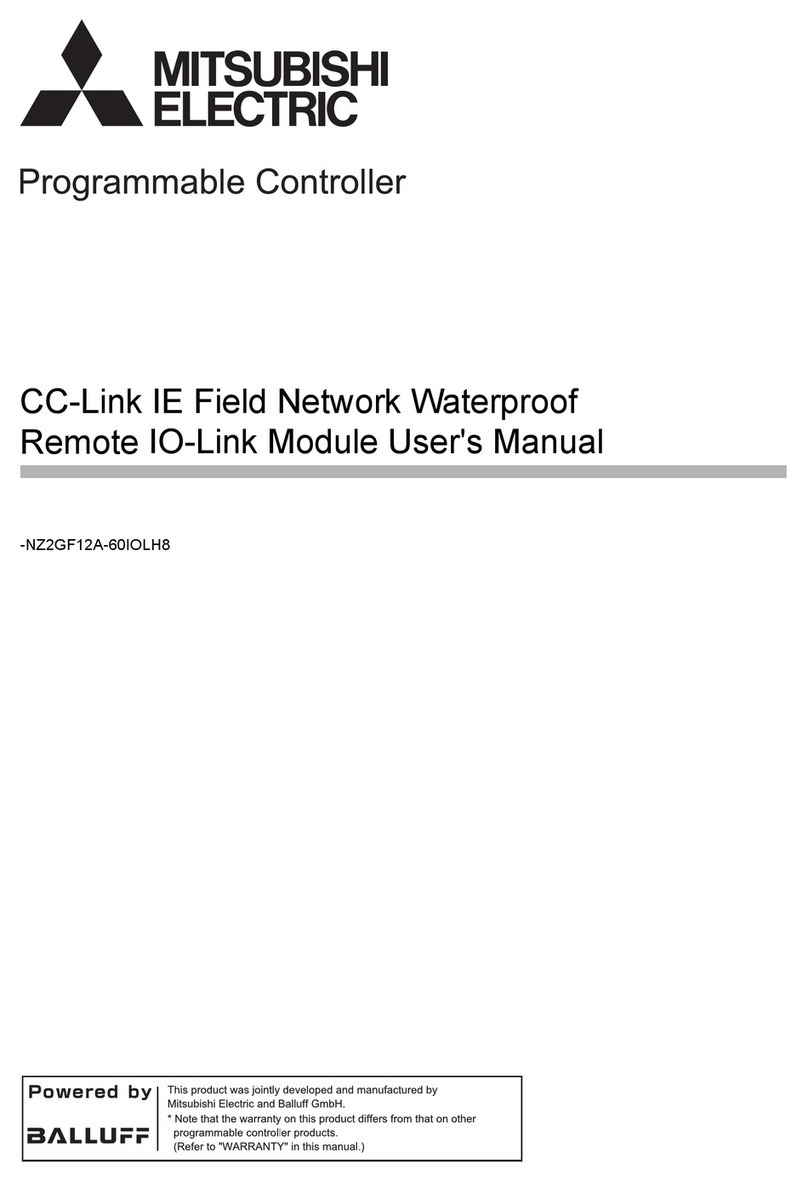
Mitsubishi Electric
Mitsubishi Electric CC-Link IE Field NZ2GF12A-60IOLH8 user manual
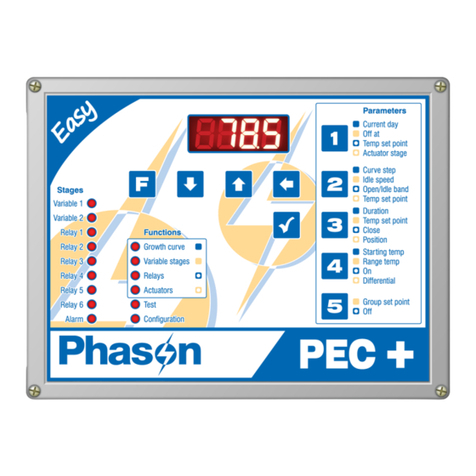
Phason
Phason PEC Plus User manual and installation guide

CD Automation
CD Automation Revo C 3Ph 60A user manual
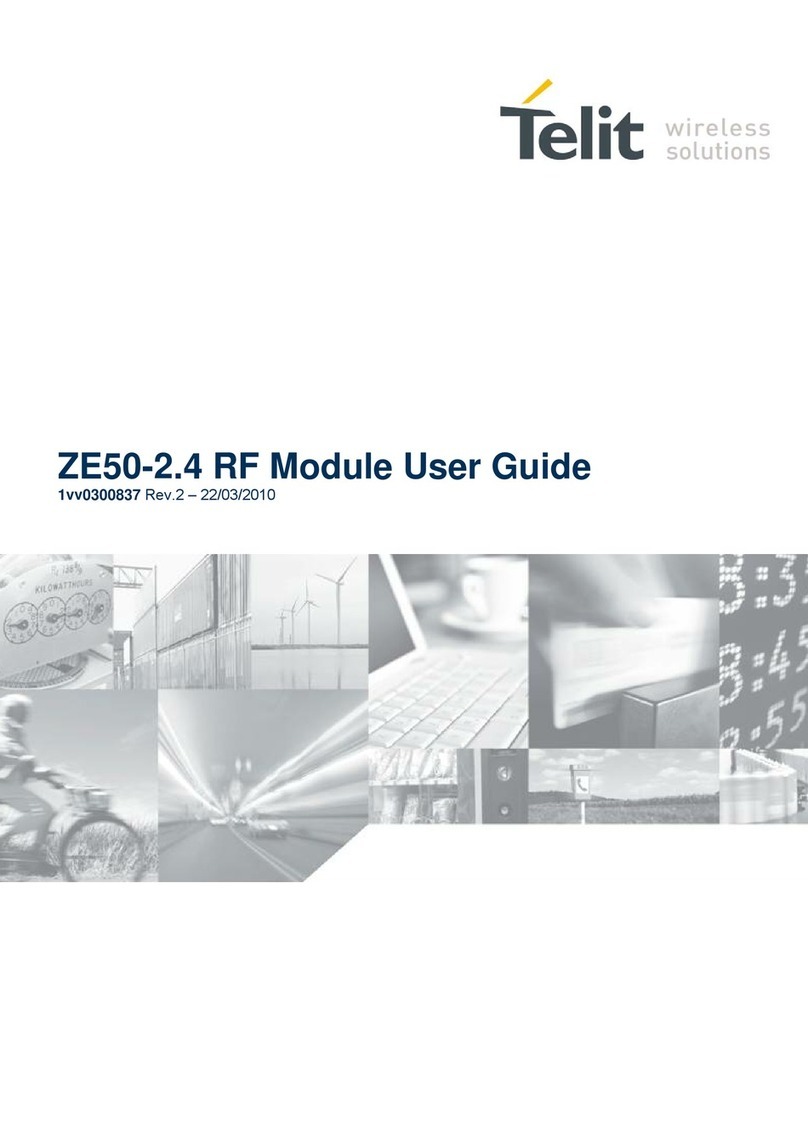
Telit Wireless Solutions
Telit Wireless Solutions ZE50-2.4 user guide

KSB
KSB BOA-Control PIC operating manual
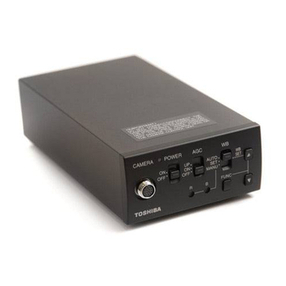
Toshiba
Toshiba IK-CU51 instruction manual


